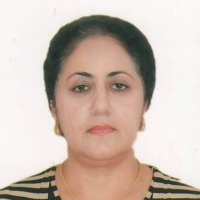International Journal of Intelligent Systems and Applications (IJISA)
IJISA Vol. 8, No. 2, 8 Feb. 2016
Cover page and Table of Contents: PDF (size: 524KB)
Extraction of Hidden Social Networks from Wiki-Environment Involved in Information Conflict
Full Text (PDF, 524KB), PP.20-27
Views: 0 Downloads: 0
Author(s)
Index Terms
Wiki-technology, wiki-page, conflict articles, information conflict, social network, hybrid weighted fuzzy c-means
Abstract
Social network analysis is a widely used technique to analyze relationships among wiki-users in Wikipedia. In this paper the method to identify hidden social networks participating in information conflicts in wiki-environment is proposed. In particular, we describe how text clustering techniques can be used for extraction of hidden social networks of wiki-users caused information conflict. By clustering unstructured text articles caused information conflict we create social network of wiki-users. For clustering of the conflict articles a hybrid weighted fuzzy-c-means method is proposed.
Cite This Paper
Rasim M. Alguliyev, Ramiz M. Aliguliyev, Irada Y. Alakbarova, "Extraction of Hidden Social Networks from Wiki-Environment Involved in Information Conflict", International Journal of Intelligent Systems and Applications(IJISA), Vol.8, No.2, pp.20-27, 2016. DOI:10.5815/ijisa.2016.02.03
Reference
[1]P. Shachaf, N. Hara, “Beyond vandalism: wikipedia trolls”. Journal of Information Science, vol. 36, no. 3, 2010, pp. 357-370.
[2]T. Yasseri, R. Sumi, A. Rung, A. Kornai, J. Kertész, “Dynamics of conflicts in wikipedia”. PLoS ONE, vol. 7, no. 6, 2012, e38869.
[3]A. G. West, S. Kannan, I. Lee, “STiki: an anti-vandalism tool for wikipedia using spatio-temporal analysis of revision metadata”, in Proceedings of the 6th International Symposium on Wikis and Open Collaboration, New York, ACM, 2010, pp. 47-48.
[4]B. Leuf, W. Cunningham, “The wiki way: quick collaboration on the web”, Laflin, PA: Addison-Wesley, 2001, 200 pp.
[5]B. Luyt, D. Tan, “Improving wikipedia’s credibility: references and citations in a sample of history articles”, American Society for Information Science and Technology, Vol. 61, No. 4, 2010, pp. 715-722.
[6]T. Iba, K. Nemoto, B. Peters, P. A. Gloor, “Analyzing the creative editing behavior of wikipedia editors: through dynamic social network analysis”, Procedia – Social and Behavioral Sciences, vol. 2, no. 4, 2010, pp. 6441-6456.
[7]T. Holloway, M. Bo?icevic, K. B?rner, “Analyzing and visualizing the semantic coverage of wikipedia and its Authors”, Journal Complexity, Vol. 12, No. 3, 2007, pp. 30-40.
[8]N. Hara, P. Shachaf, K. F. Hew, “Cross-cultural analysis of the wikipedia community” American Society for Information Science and Technology, vol. 61, no. 10, 2010, pp.2097-2108.
[9]J. Moskaliuk, J. Kimmerle, U. Cress, “Collaborative knowledge building with wikis: the impact of redundancy and polarity”, Computers & Education, 2012, vol. 58, No. 4, pp. 1049-1057.
[10]S. Javanmardi, C. Lopes, P. Baldi, “Modeling user reputation in wikis”, Statistical Analysis and Data Mining, vol. 3, no. 2, 2010, pp. 126-139.
[11]S. Javanmardi, D. W. McDonald, C. V. Lopes, “Vandalism detection in wikipedia: a high-performing, feature-rich model and its reduction through lasso”, in Proceedings of the 7th International Symposium on Wikis and Open Collaboration, New York, ACM, 2011, pp. 82-90.
[12]H. Meishar-Tal, E. Tal-Elhasid, “Measuring collaboration in educational wikis – a methodological”, Emerging Technologies in Learning, vol. 3, 2008, pp. 46–49.
[13]http://en.wikipedia.org/wiki/Wikipedia:Edit_warring
[14]B.T. Adler, L. de Alfaro, I. Pye, “Detecting wikipedia vandalism using wikitrust”, Lab Report for PAN at CLEF, 2010, (http://ceur-ws.org/Vol-1176/CLEF2010wn-PAN-AdlerEt2010.pdf).
[15]B. T. Adler, L. de Alfaro, “A content-driven reputation system for the wikipedia”, in Proceedings of the 16th International Conference on World Wide Web, New York, ACM, 2007, pp. 261-270.
[16]B. T. Adler, L. de Alfaro, S. M. Mola-Velasco, P. Rosso, A. G. West, “Wikipedia vandalism detection: combining natural language, metadata, and reputation features”, in Proceedings of the 12th International Conference on Intelligent Text Processing and Computational Linguistics, Berlin, Springer-Verlag, 2011, pp. 277-288.
[17]L. de Alfaro, A. Kulshreshtha, I. Pye, B. T. Adler, “Reputation systems for open collaboration”, Communications of the ACM, vol. 54, no. 8, 2011, pp. 81–87.
[18]I. Y. Alakbarova, “Analysis factors influencing on ranking of papers in wiki environment”. Problems of Information Society, vol. 2, no. 6, 2012, pp. 27-32. (in Azerbaijani)
[19]http://en.wikipedia.org/wiki/Wikipedia: Reviewing
[20]S. Shedata, F. Karray, M. Kamel, “An efficient-based mining model for enhancing text clustering”, IEEE Transactions on Knowledge and Data Engineering, vol. 22, no. 10, 2010, pp. 1360-1371.
[21]R. M. Alguliev, R. M. Aliguliyev, I. Y. Alekperova, “Cluster approach to the efficient use of multimedia resources in information warfare in wikimedia”, Automatic Control and Computer Sciences, vol. 48, no 2, 2014, pp. 97-108.
[22]A. Skabar, K. Abdalgader, “Clustering sentence-level text using a novel fuzzy relational clustering algorithm”, IEEE Transactions on Knowledge and Data Engineering, vol. 25, no. 1, 2013, pp. 62-75.
[23]N. Ye, S. M. Emran, Q. Chen, S. Vilbert, “Multivariate statistical analysis of audit trails for host-based intrusion detection”, IEEE Transactions on Computers, vol. 51, no. 7, 2002, pp. 810-820.
[24]J. Jayabharathy, S. Kanmani, “Correlated concept based dynamic document clustering algorithms for newsgroups and scientific literature”, Decision Analytics, vol. 1, no. 3, 2014, pp. 1-21.
[25]H. L. Shieh, “A hybrid fuzzy clustering method with a robust validity index”, Fuzzy Systems, vol. 16, no.1, 2014, pp. 39-45.
[26]J. L. Chen, J. H. Wang, “A new robust clustering algorithm-density-weighted fuzzy c-means”, in Proceedings of the IEEE International Conference on Systems, Man, and Cybernetics, vol. 3, 1999, pp. 90-94.
[27]A. H. Hadjahmadi, M. M. Homayounpour, S. M. Ahadi, “Bilateral Weighted Fuzzy C-Means Clustering”, Iranian Journal of Electrical & Electronic Engineering, 2012, Vol. 8, No. 2, pp. 108-121.
[28]M. Nazari, J. Shanbehzadeh, A. Sarrafzadeh, “Fuzzy C-Means Based on Automated Variable Feature Weighting”, in Proceedings of the International MultiConference of Engineers and Computer Scientists, 2013, pp.1-5.
[29]N. R. Pal, K. Pal, J. C. Bezdek, “A mixed c-means clustering model”, in Proceedings of the IEEE International Conference on Fuzzy Systems, vol. 1, 1997, pp.11-21.
[30]R. M. Aliguliyev, “Performance evaluation of density-based clustering methods”, Information Sciences, vol. 179, no. 20, 2009, pp. 3583-3602.
[31]R. M. Aliguliyev, “Clustering of document collection – a weighting approach”, Expert Systems with Applications, vol. 36, no. 4, 2009, pp. 7904-7916.
[32]M. El. Agha, W.M. Ashour, “Efficient and fast initialization algorithm for k-means clustering”, International Journal of Intelligent Systems and Applications, vol.4, no.1, 2012, pp. 21-31.
[33]R. M. Aliguliyev, “A new sentence similarity measure and sentence based extractive technique for automatic text summarization”, Expert Systems with Applications, vol. 36, no. 4, 2009, pp. 7764-7772.
[34]P. Wadhwa, M.P.S. Bhatia. Discovering hidden networks in on-line social networks // International Journal of Intelligent Systems and Applications, vol. 6, no. 5, 2014, pp.44-54.


